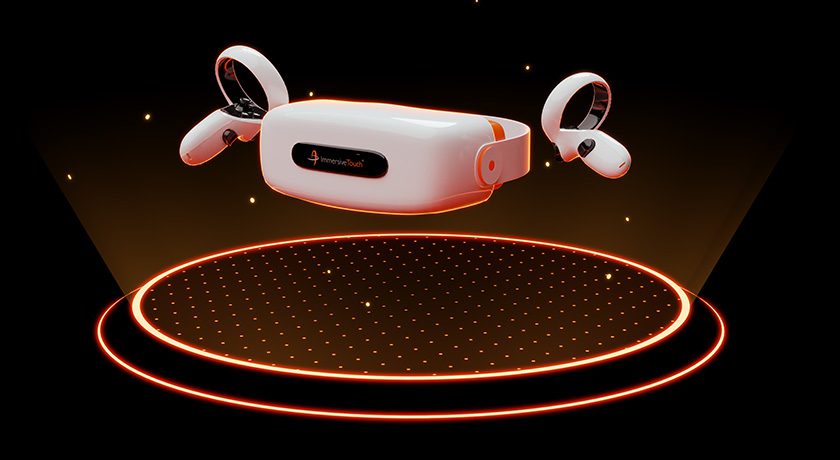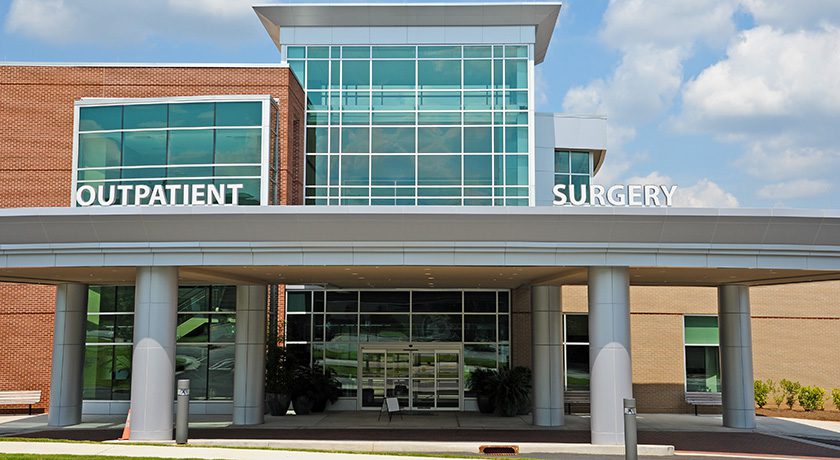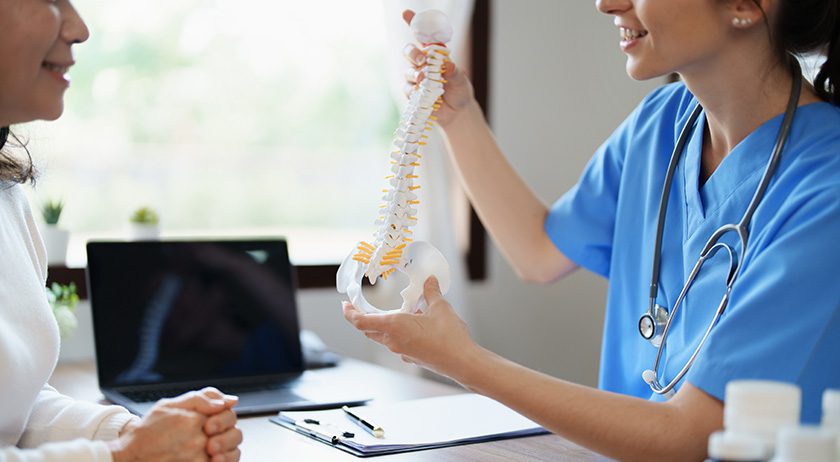

 Copy to clipboard
Copy to clipboard 
The ambulatory surgical center (ASC) market currently has no ceiling, and orthopedics is leading the growth. Orthopedic surgery centers are transforming the delivery of care in the U.S. through the adoption of technological advancements, response to patient preferences, improved safety data favoring outpatient cases and parent centers increasingly supporting these sites.
According to the Centers for Medicare & Medicaid Services (CMS), orthopedic surgery is one of the fastest-growing segments in outpatient surgery. Orthopedic procedures performed in ASCs save the agency tens of billions of dollars annually and could potentially save hundreds of billions of dollars by transitioning more eligible cases from hospitals to surgery centers.
With this trend in mind, orthopedic companies that strategically align their products with the ASC industry will flourish. Herein, we discuss the top trends in orthopedic outpatient surgery for 2025 and provide recommendations for device companies on how to navigate and respond.
Total Joint Replacement Growth is Unstoppable
Performing joint replacements in an ASC was practically sacrilegious to consider when I opened my first surgery center two decades ago in the Midwest. The percentage of total knee and hip replacement procedures performed in ASCs has surged since CMS removed them from the inpatient-only list in 2018 and 2020, respectively. CMS reported that over 25% of Medicare-approved total knee replacements were performed in surgery centers in 2023.
To capture more of this market, device companies should design joint implants optimized for outpatient efficiency. Durable, lightweight implants that reduce the complexity of surgery, combined with streamlined instruments in sterilized packaging, would increase productivity. Other bundled solutions for joints could include implants, disposables and postoperative aids that work together to reduce ASC costs while maintaining quality and efficiency.
The adoption of robotic-assisted technologies is also accelerating growth in orthopedic procedures in ASCs. Studies have shown that robotic-assisted knee replacements can reduce revision rates and improve implant alignment, making these systems highly attractive to patients, surgeons and payors. One of the biggest driving factors for robotic-assisted surgery in the outpatient setting is CMS’s approval of reimbursement for these systems in ASCs.
Enabling technology companies should design compact and cost-effective systems that address the needs of surgery centers while providing precision for joint replacement procedures. Systems must be easy to integrate and supported by robust training programs designed for ASC staff. Additionally, companies must offer flexible financing models to make these systems affordable for ASCs, which often operate on tight budgets for newer technology.
CMS Reimbursement Maze Requires Navigation
CMS policies continue to present challenges for ASCs. While it expands its list of CPT codes and surgeries for ASCs, the agency’s reimbursement policies are increasingly tied to value-based care (VBC) models. CMS’s Comprehensive Care for Joint Replacement (CJR) and Bundled Payments for Care Improvement (BPCI) initiatives incentivize ASC administrators and surgeons to reduce costs while maintaining outcomes. Although the 2024 payment rule only increased reimbursement by a meager 2.8%, it is still a move in the right direction and will help sustain confidence in the industry.
Johnson & Johnson MedTech collaborates with surgery centers to provide cost-benefit analyses and outcome data that demonstrate how their implants and hardware align with quality metrics proposed by Medicare. Arthrex’s suture anchor system has been shown to reduce complications and improve patient recovery in ASCs, making it a valuable tool for VBC-focused care.
Orthopedic companies could actively support surgery centers by providing tools and data to navigate reimbursement challenges. ASC owners value clinical evidence packages that demonstrate reduced complications, cost savings and faster recovery times for patients. Additionally, value-based contracts tied to performance metrics are becoming increasingly attractive to surgery centers striving to adapt to CMS’s evolving models.
Patient First is the Number One Priority
Patient satisfaction is an increasingly important determinant of reimbursement. With this in mind, ASCs are prioritizing enhancements to the patient journey. CMS has adapted the Hospital Consumer Assessment of Healthcare Providers and Systems (HCAHPS) survey for outpatient settings, tying patient experience scores to reimbursement.
Conformis custom knee implants sold by restor3D are tailored to each patient’s anatomy, reducing pain and recovery time while enhancing patient satisfaction. Custom or personalized implants could improve HCAHPS scores for ASCs. Orthopedic companies are also developing user-friendly digital tools, such as apps or wearable devices, to track patients’ recovery progress and postoperative protocols. Educational materials and personalized care plans further empower patients, boosting surgical outcomes and satisfaction.
Sustainability and Green Initiatives Experience Growth
ASCs are adopting practices that reduce costs and meet environmental goals. CMS has begun incorporating sustainability metrics into its ASC Quality Reporting (ASCQR) program, incentivizing surgery centers to adopt eco-friendly practices.
Steris offers reusable surgical instruments and advanced sterilization systems that significantly reduce medical waste, aligning with surgery centers’ goals of cost reduction and environmental responsibility. Sustainable product development, such as reusable tools and biodegradable packaging, represents the future. Marketing these products as both environmentally friendly and cost-effective can help ASCs meet regulatory requirements and appeal to eco-conscious patients. Recycling programs and discounts on reusable products are also being used as incentives.
AI and Data Analytics Will Revolutionize Operations
Artificial intelligence (AI) and data analytics are becoming integral to ASC operations, enabling surgery centers to make better decisions that improve surgical outcomes. CMS’s expansion of reimbursement codes for remote patient monitoring has further incentivized the adoption of AI-driven tools for preoperative assessments and postoperative monitoring.
Companies like Smith+Nephew and Medtronic have developed platforms that use AI to assist surgeons in planning and executing procedures with greater precision. This is just the beginning of AI capabilities integrated into products. Collaboration with data analytics firms is also increasing, providing ASC administrators with actionable insights on key performance metrics such as recovery times and infection rates.
Rapid Growth Continues in Spine Procedures
Spine surgeries are one of the fastest-growing segments in the ASC market, with over 35% of all spine procedures performed in outpatient settings in 2024. CMS continues to expand its ASC-approved list of spine surgeries, including cervical fusions and lumbar decompressions, which will lead to further growth.
Numerous orthopedic device and enabling technology companies market innovations that emphasize minimally invasive techniques that reduce recovery times and hospital stays while expanding the ASC industry’s horizons. Companies are also developing surgical kits and implants designed explicitly for outpatient use. These kits are modular, easy to sterilize, lightweight and efficient.
Surgeon Training and Education is Imperative
As new devices and technologies are introduced, ASCs must ensure that surgeons and staff are adequately trained to maintain efficiency and quality. CMS’s Quality Payment Program (QPP) includes measures related to surgeon competency, incentivizing ASCs to invest in continuous education and monitoring of metrics.
Enovis hosts extensive educational workshops and virtual training programs to ensure that surgeons remain proficient with their latest tools and techniques. Other educational activities include the expanding use of virtual reality, virtual simulations, on-demand training videos and live workshops. ASCs also collaborate with educational institutions to co-host these programs and strengthen the industry.
The ASC landscape is poised for significant evolution, driven by CMS policies, patient demands, and technological advances. To succeed in 2025 and beyond, orthopedic companies must anticipate these trends and position themselves as strategic partners to surgery centers.
The ambulatory surgical center (ASC) market currently has no ceiling, and orthopedics is leading the growth. Orthopedic surgery centers are transforming the delivery of care in the U.S. through the adoption of technological advancements, response to patient preferences, improved safety data favoring outpatient cases and parent centers...
The ambulatory surgical center (ASC) market currently has no ceiling, and orthopedics is leading the growth. Orthopedic surgery centers are transforming the delivery of care in the U.S. through the adoption of technological advancements, response to patient preferences, improved safety data favoring outpatient cases and parent centers increasingly supporting these sites.
According to the Centers for Medicare & Medicaid Services (CMS), orthopedic surgery is one of the fastest-growing segments in outpatient surgery. Orthopedic procedures performed in ASCs save the agency tens of billions of dollars annually and could potentially save hundreds of billions of dollars by transitioning more eligible cases from hospitals to surgery centers.
With this trend in mind, orthopedic companies that strategically align their products with the ASC industry will flourish. Herein, we discuss the top trends in orthopedic outpatient surgery for 2025 and provide recommendations for device companies on how to navigate and respond.
Total Joint Replacement Growth is Unstoppable
Performing joint replacements in an ASC was practically sacrilegious to consider when I opened my first surgery center two decades ago in the Midwest. The percentage of total knee and hip replacement procedures performed in ASCs has surged since CMS removed them from the inpatient-only list in 2018 and 2020, respectively. CMS reported that over 25% of Medicare-approved total knee replacements were performed in surgery centers in 2023.
To capture more of this market, device companies should design joint implants optimized for outpatient efficiency. Durable, lightweight implants that reduce the complexity of surgery, combined with streamlined instruments in sterilized packaging, would increase productivity. Other bundled solutions for joints could include implants, disposables and postoperative aids that work together to reduce ASC costs while maintaining quality and efficiency.
The adoption of robotic-assisted technologies is also accelerating growth in orthopedic procedures in ASCs. Studies have shown that robotic-assisted knee replacements can reduce revision rates and improve implant alignment, making these systems highly attractive to patients, surgeons and payors. One of the biggest driving factors for robotic-assisted surgery in the outpatient setting is CMS’s approval of reimbursement for these systems in ASCs.
Enabling technology companies should design compact and cost-effective systems that address the needs of surgery centers while providing precision for joint replacement procedures. Systems must be easy to integrate and supported by robust training programs designed for ASC staff. Additionally, companies must offer flexible financing models to make these systems affordable for ASCs, which often operate on tight budgets for newer technology.
CMS Reimbursement Maze Requires Navigation
CMS policies continue to present challenges for ASCs. While it expands its list of CPT codes and surgeries for ASCs, the agency’s reimbursement policies are increasingly tied to value-based care (VBC) models. CMS’s Comprehensive Care for Joint Replacement (CJR) and Bundled Payments for Care Improvement (BPCI) initiatives incentivize ASC administrators and surgeons to reduce costs while maintaining outcomes. Although the 2024 payment rule only increased reimbursement by a meager 2.8%, it is still a move in the right direction and will help sustain confidence in the industry.
Johnson & Johnson MedTech collaborates with surgery centers to provide cost-benefit analyses and outcome data that demonstrate how their implants and hardware align with quality metrics proposed by Medicare. Arthrex’s suture anchor system has been shown to reduce complications and improve patient recovery in ASCs, making it a valuable tool for VBC-focused care.
Orthopedic companies could actively support surgery centers by providing tools and data to navigate reimbursement challenges. ASC owners value clinical evidence packages that demonstrate reduced complications, cost savings and faster recovery times for patients. Additionally, value-based contracts tied to performance metrics are becoming increasingly attractive to surgery centers striving to adapt to CMS’s evolving models.
Patient First is the Number One Priority
Patient satisfaction is an increasingly important determinant of reimbursement. With this in mind, ASCs are prioritizing enhancements to the patient journey. CMS has adapted the Hospital Consumer Assessment of Healthcare Providers and Systems (HCAHPS) survey for outpatient settings, tying patient experience scores to reimbursement.
Conformis custom knee implants sold by restor3D are tailored to each patient’s anatomy, reducing pain and recovery time while enhancing patient satisfaction. Custom or personalized implants could improve HCAHPS scores for ASCs. Orthopedic companies are also developing user-friendly digital tools, such as apps or wearable devices, to track patients’ recovery progress and postoperative protocols. Educational materials and personalized care plans further empower patients, boosting surgical outcomes and satisfaction.
Sustainability and Green Initiatives Experience Growth
ASCs are adopting practices that reduce costs and meet environmental goals. CMS has begun incorporating sustainability metrics into its ASC Quality Reporting (ASCQR) program, incentivizing surgery centers to adopt eco-friendly practices.
Steris offers reusable surgical instruments and advanced sterilization systems that significantly reduce medical waste, aligning with surgery centers’ goals of cost reduction and environmental responsibility. Sustainable product development, such as reusable tools and biodegradable packaging, represents the future. Marketing these products as both environmentally friendly and cost-effective can help ASCs meet regulatory requirements and appeal to eco-conscious patients. Recycling programs and discounts on reusable products are also being used as incentives.
AI and Data Analytics Will Revolutionize Operations
Artificial intelligence (AI) and data analytics are becoming integral to ASC operations, enabling surgery centers to make better decisions that improve surgical outcomes. CMS’s expansion of reimbursement codes for remote patient monitoring has further incentivized the adoption of AI-driven tools for preoperative assessments and postoperative monitoring.
Companies like Smith+Nephew and Medtronic have developed platforms that use AI to assist surgeons in planning and executing procedures with greater precision. This is just the beginning of AI capabilities integrated into products. Collaboration with data analytics firms is also increasing, providing ASC administrators with actionable insights on key performance metrics such as recovery times and infection rates.
Rapid Growth Continues in Spine Procedures
Spine surgeries are one of the fastest-growing segments in the ASC market, with over 35% of all spine procedures performed in outpatient settings in 2024. CMS continues to expand its ASC-approved list of spine surgeries, including cervical fusions and lumbar decompressions, which will lead to further growth.
Numerous orthopedic device and enabling technology companies market innovations that emphasize minimally invasive techniques that reduce recovery times and hospital stays while expanding the ASC industry’s horizons. Companies are also developing surgical kits and implants designed explicitly for outpatient use. These kits are modular, easy to sterilize, lightweight and efficient.
Surgeon Training and Education is Imperative
As new devices and technologies are introduced, ASCs must ensure that surgeons and staff are adequately trained to maintain efficiency and quality. CMS’s Quality Payment Program (QPP) includes measures related to surgeon competency, incentivizing ASCs to invest in continuous education and monitoring of metrics.
Enovis hosts extensive educational workshops and virtual training programs to ensure that surgeons remain proficient with their latest tools and techniques. Other educational activities include the expanding use of virtual reality, virtual simulations, on-demand training videos and live workshops. ASCs also collaborate with educational institutions to co-host these programs and strengthen the industry.
The ASC landscape is poised for significant evolution, driven by CMS policies, patient demands, and technological advances. To succeed in 2025 and beyond, orthopedic companies must anticipate these trends and position themselves as strategic partners to surgery centers.

You are out of free articles for this month
Subscribe as a Guest for $0 and unlock a total of 5 articles per month.
You are out of five articles for this month
Subscribe as an Executive Member for access to unlimited articles, THE ORTHOPAEDIC INDUSTRY ANNUAL REPORT and more.
SA
Shakeel Ahmed M.D., is the CEO of Atlas Surgical Group, one of the largest ambulatory surgical centers and ancillary services networks in the Midwest. He has published seven books and more than a hundred articles on the business aspects of ASCs. He is an ASC developer and advisor on ASCs to governments across the globe.







